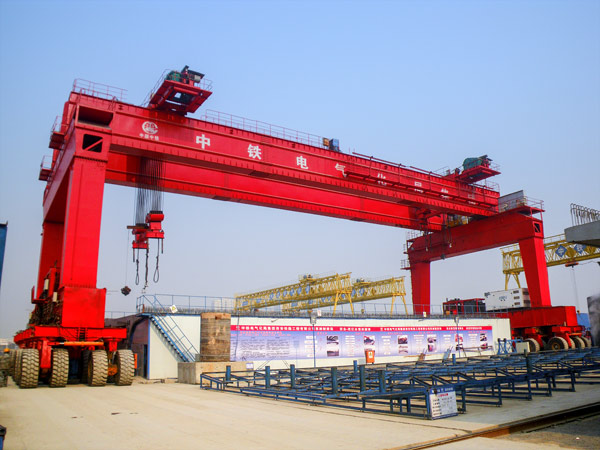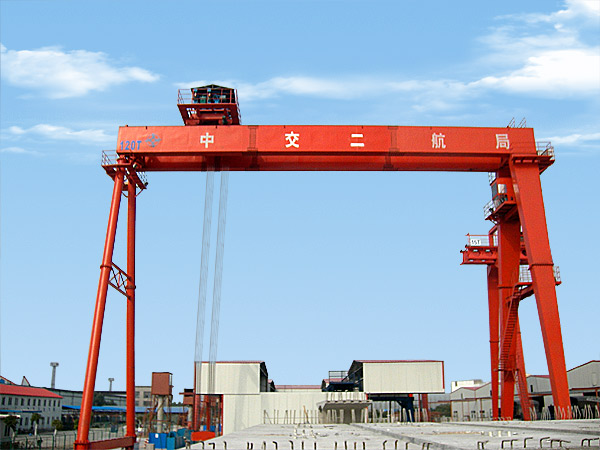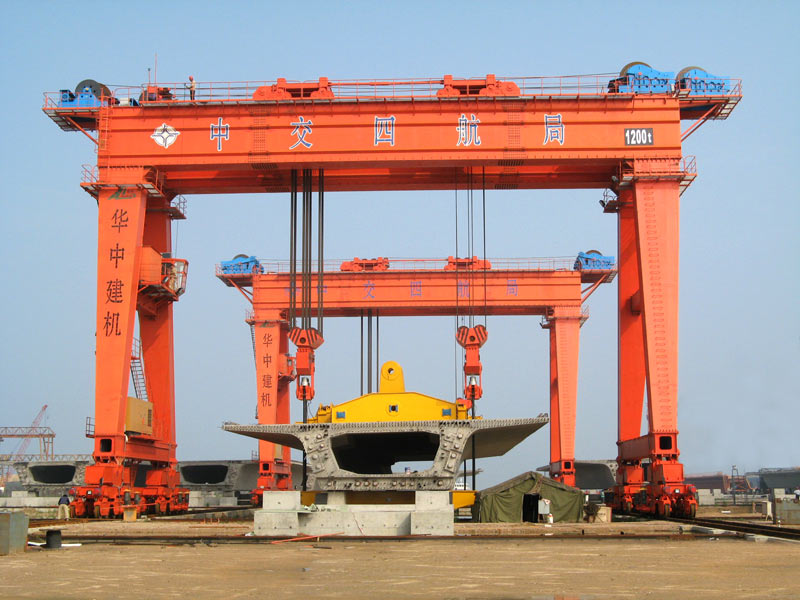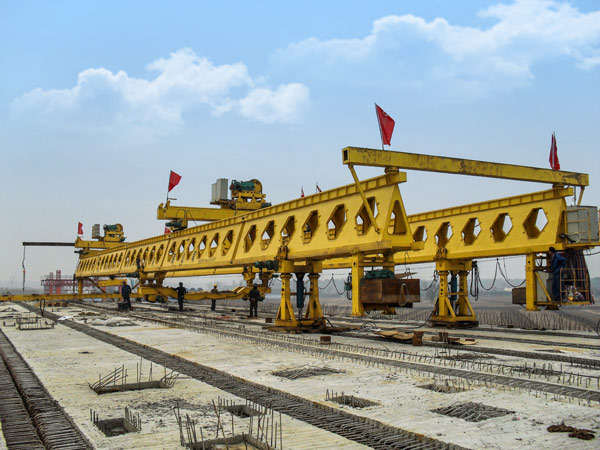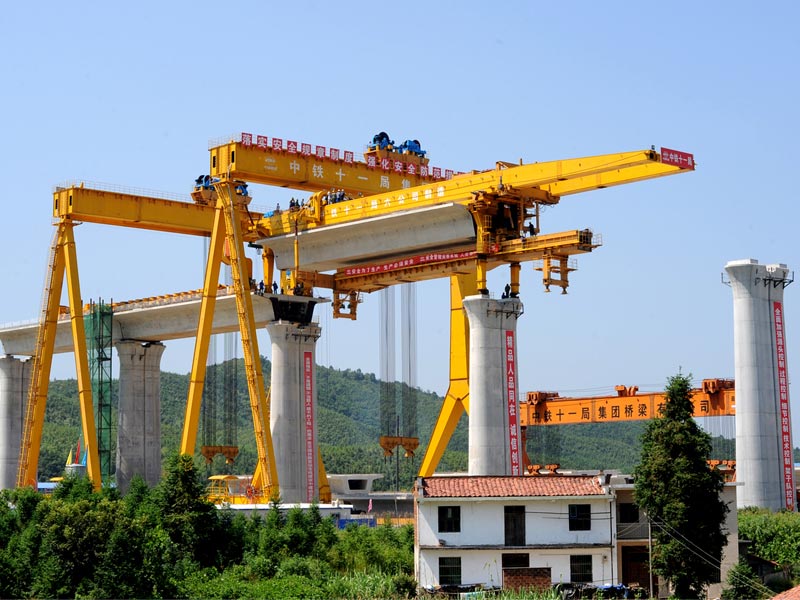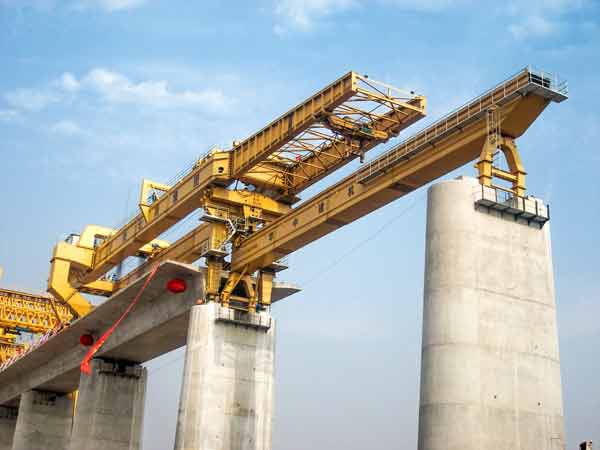Installation procedures of Gantry Crane
(1) With the truck crane, assemble and check the main girder beam, supporting legs and gearboxes by tag on the ground. Put them proper places waiting to lift.
(2) Assemble the gearboxes on the crane rails, make them immovable through pulling the diagonal. Ensure the either side of the supporting legs and gearbox firmly conjunction with the pins connection. Then fix the tighten steel rope and chain hoists on the ground anchor. Assemble the reverse side in the same way. To guarantee the mounting dimensions of the main girder, the rigid and flexible supporting legs must be perpendicular to the ground.
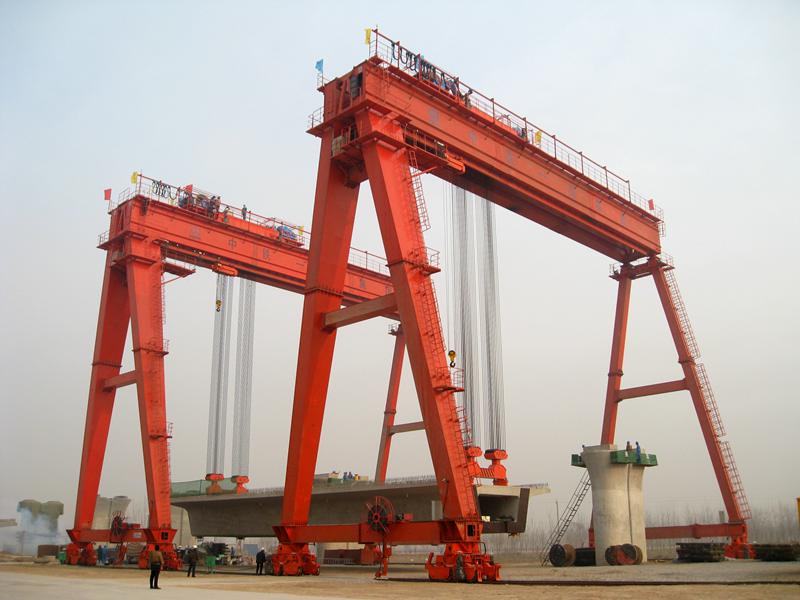
(3) To hoist the both ends of the either side of the main girder with two truck cranes and put them on the rigid and flexible supporting legs. Bolt the connecting plates mounted under the girder and on the upper surface of the joists. Conduct the reverse main girder in the same ways. Special Attention: Don’t loose hook and unload before the main girder positive anchoring. (See Diagram 3)
(4) Hoist the connecting frame with one truck crane and bolt them.
(5) Hoist the trolley on its track mounted on the upper surface of the girder with one truck crane. Adjust it to make the wheel tread on the track. (See Diagram 4)
(6) Hoist the operator’s room, ladder, walkway and platform, fence and other attachments on the designated positions. (See Diagram 4)
(7) Install the electrical appliance and wires, disassemble the rope, ground anchor etc.
We can conduct the test run (commissioning) after everything is ready!
Make the record during the test run (commissioning).
Safety Notice:
(1) We must guide the workers foster and realize the importance of the safety production. All workers must strictly adhere to the safety regulations.
(2) The constructors need to accept the rigorous training, the qualified ones can go to their posts.
(3) The crane slings must own 5 times the safety coefficient of the normal ones; the binding wires own 10 times of the normal ones.
(4) No admittance for non-construction workers in working areas. Don’t halt nearby the running crane.
(5) The wind speed must less than or equal grade 5 while conducting the installation.
(6) The operator has to apply himself to his work. The commander must make the correct orders. The operator should totally take orders from the commander.
(7) Keep stable and slowly, avoid vibration and swing in course of hoisting goods.
(8) Make a thorough understanding of the installation scheme before construction. Be familiar with the operation and concrete steps. Don’t randomly change the scheme, contact the manufacturer when it really need to do.
(9) In the course of the installation, pre-aside the safety area and arrange full-time staff to monitor the working environment. Contact the control center while detecting the abnormal conditions.
(10) Carefully check the instruments before construction such as chain block, steel rope, shackles.
(11) Professional electricians, standard distribution box and switchboard need to be equipped with. Cable laying comply with related standards.
(12) Make the unified and clear signal to guide the truck crane. Only the operator can go into the cabin and operate the crane. The hook must fasten to the stationary objects after stopping working.
(13) The commanding system should be unified and keep communications smoothly during the high-altitude and ground operations.
(14) Prohibit loosing and unloading the hook in the course of hoisting parts especially the large-sizes ones.
(15) The high-altitude installation staff needs to wear safety helmets and fasten the safety belt.


